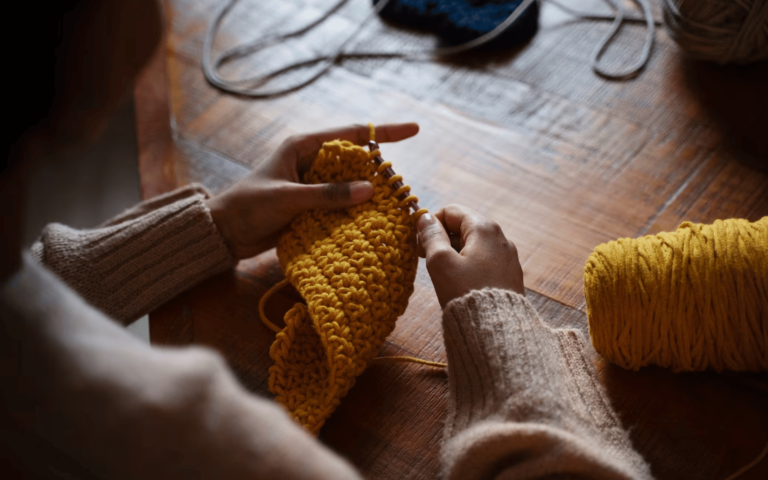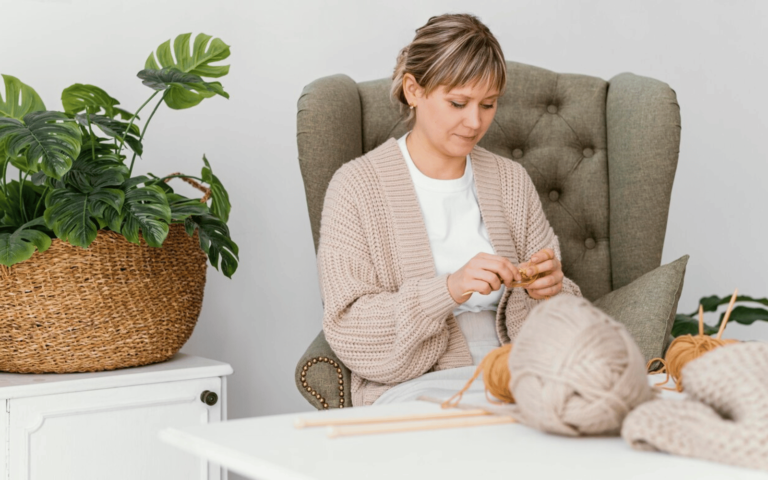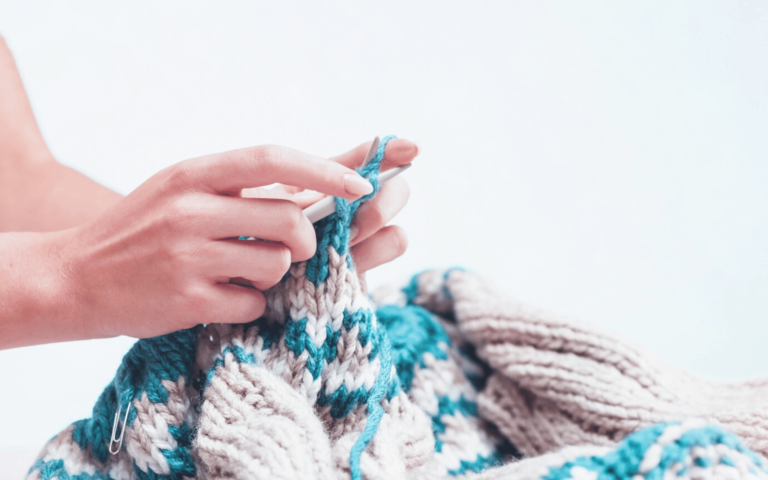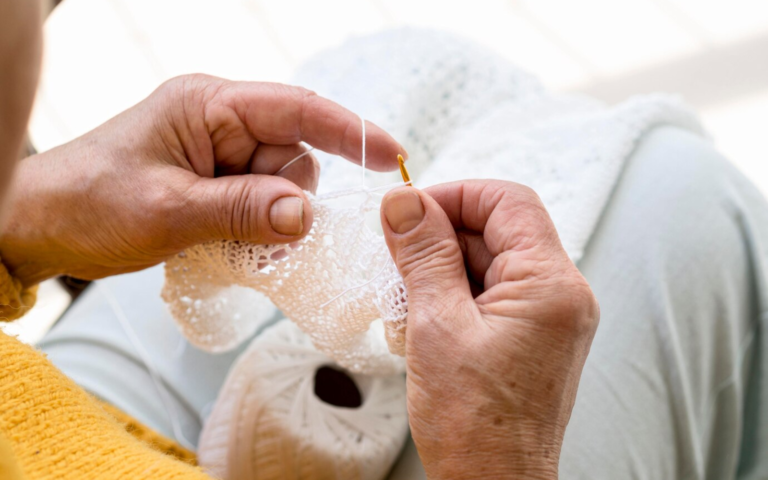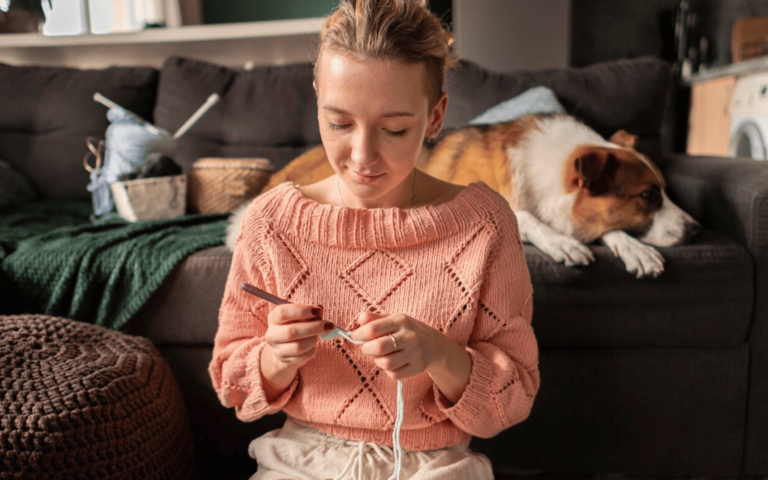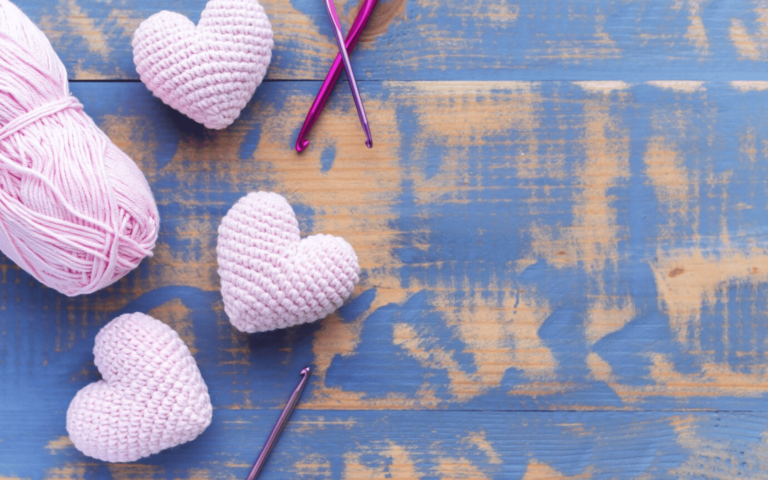Knitting Colorwork: Tips and Techniques for Creating Multicolored Designs
Knitting colorwork is an exquisite technique that involves using multiple yarn colors to create stunning and intricate designs in knitting projects. It’s an art form that adds depth, visual interest, and personality to your creations. Whether you’re a novice or an experienced knitter, learning colorwork can elevate your projects and unleash your creativity. This comprehensive guide delves into the realm of knitting colorwork, providing a wealth of information, tips, and techniques to help you understand this beautiful craft. Understanding the significance of colorwork in knitting is essential. Colorwork techniques open up a whole new world of possibilities in creating patterns, images, and textures in your knitwear. From Fair Isle to Intarsia, each method offers unique opportunities for expressing your artistic flair. Moreover, the blending of colors, shading, and contrasts in colorwork knitting enhances the visual appeal of garments, making them stand out with a touch of individuality. This article aims to provide a detailed overview of the nuances involved in knitting colorwork, touching on the different techniques, tools required, yarn considerations, and how to prepare for successful colorwork projects. Additionally, it will examine advanced techniques, troubleshoot common issues, and offer inspiration for exciting colorwork project ideas.
Understanding Knitting Colorwork
Explaining Colorwork Techniques in Knitting
Colorwork in knitting encompasses several techniques, with each method offering distinct characteristics. Stranded colorwork involves working with two or more colors across a row or round, with the unused colors carried along the back of the work. Fair Isle, a subset of stranded knitting, is known for its intricate and repetitive motifs, often using small color repeats to create beautifully detailed patterns. On the other hand, Intarsia involves knitting with separate balls or bobbins of yarn for each color block within a row, allowing for larger color blocks without carrying yarn across the entire work. Understanding these techniques is for choosing the right one for your project. Stranded colorwork is excellent for small repeating patterns and is often used in Nordic sweaters and traditional Fair Isle designs. Fair Isle, with its limited floats, creates a dense and warm fabric, while Intarsia is perfect for large, non-repeating blocks of color, as it allows for clean color changes without carrying the yarn across the work.
Importance of Yarn Choice in Colorwork
Selecting the right yarn is for successful colorwork projects. Yarn weight, fiber content, and color availability all play a significant role. The weight of the yarn affects the gauge and drape of the fabric, influencing the final look of the project. In colorwork, it’s important to use yarns with consistent thickness to maintain even tension throughout the piece. For traditional Fair Isle and stranded colorwork, choosing yarns of similar thickness is essential to ensure an even and balanced fabric. Additionally, considering the fiber content is vital as different fibers behave uniquely during knitting and wear. For instance, animal fibers like wool have excellent elasticity, making them suitable for colorwork due to their ability to retain their shape and stitch definition. In contrast, plant-based fibers like cotton or linen are less elastic, making them more suitable for larger color blocks where stretchiness isn’t as critical.
Tools Required for Successful Colorwork
Various tools aid in achieving flawless colorwork. Choosing the right knitting needles is essential; the needle Sort and size can significantly impact the tension and overall appearance of the project. Circular needles are often preferred for colorwork projects, as they can accommodate a large number of stitches, making it easier to work in the round for projects like sweaters or hats. Moreover, using stitch markers, row counters, and other tools help in keeping track of complex colorwork patterns, ensuring accuracy and ease during the knitting process. Stitch markers can be used to indicate the beginning of rounds or specific pattern repeats, while row counters help you keep track of your progress, especially when working on larger colorwork pieces.
Preparing for Success
Understanding Colorwork Charts
Colorwork charts are graphical representations of the pattern, displaying which color to use for each stitch. Learning how to read and decode these charts is fundamental to executing intricate colorwork designs accurately. Implementing colorwork charts in projects requires understanding symbols and their representation of different colors, enabling knitters to visualize the final design before knitting. Colorwork charts are like a map that guides you through the knitting journey. They provide a visual reference for the color changes and stitch patterns, making it easier to create complex designs. When working with colorwork charts, it’s essential to familiarize yourself with the key or legend that explains the symbols used in the chart. This key typically associates each symbol with a specific color or action, such as knitting or purling. Using a magnetic board or chart holder can be incredibly helpful when working with colorwork charts. These tools keep the chart visible and stable, ensuring that you can easily follow the pattern without losing your place. As you become more experienced with colorwork, you may even find it beneficial to create your own colorwork charts for designing unique patterns.
Preparing Yarn for Colorwork
Efficient yarn management is for successful colorwork projects. Using yarn bobbins or creating butterflies aids in managing multiple yarns, preventing tangling or unnecessary twists in the yarn. This preparation ensures smooth transitions between colors, resulting in a neat and well-executed design. When working with multiple colors, it’s essential to keep the yarns from tangling and ensure that they feed smoothly while knitting. Yarn bobbins, which are small, often plastic, spools that hold a portion of each color, are a common tool used in colorwork. They allow you to control the length of yarn for each color, preventing excessive tangling or confusion while working. Butterflies are another yarn management technique that can be employed, particularly for smaller color sections. To create a yarn butterfly, you wind a length of yarn around your fingers or a special tool, creating a butterfly-like shape. This compact yarn package can be easily pulled from the center to maintain tension and manage short-color sections.
Swatching for Colorwork Projects
Swatching is an essential step in preparing for colorwork projects. It helps in determining the gauge and ensuring that the knitter achieves the correct tension for the project. Swatching also allows for experimentation with different color combinations and patterns before starting the main project, providing an opportunity to fine-tune the design and become familiar with the chosen colorwork technique. Swatching for colorwork serves multiple purposes. First and foremost, it allows you to check your gauge and make necessary adjustments. Knitting at the correct gauge ensures that your finished project will have the right dimensions and fit as expected. Given that colorwork can affect gauge due to the additional strands of yarn, swatching becomes even more critical in these projects. Additionally, swatching for colorwork allows you to practice the specific techniques and stitches that will be used in the main project. You can experiment with different color combinations and motifs, ensuring that you’re comfortable with the colorwork charts and can execute the chosen pattern accurately. Swatching also provides a visual reference for how the colors will interact and appear in the finished piece, helping you make design decisions.
Tips for Executing Knitting Colorwork Projects
Tension and Gauge Control
Maintaining consistent tension is vital in colorwork knitting. Irregular tension can distort the design and affect the overall appearance of the project. Tips such as knitting at a relaxed pace, maintaining even yarn tension, and using the right needle size to achieve the desired gauge can significantly improve the outcome of the colorwork.
To achieve even tension in colorwork projects, consider the way you hold the yarn. Some knitters find it beneficial to hold one color in their right hand (English or throwing style) and the other in their left hand (Continental style). This technique helps maintain consistent tension in both yarns, leading to more uniform and balanced colorwork.
Moreover, practicing mindfulness while knitting can significantly impact tension control. Knitting in a relaxed and steady manner without pulling the yarn too tight or leaving it too loose can make a substantial difference in the quality of the colorwork. Additionally, using the right needle size according to the yarn weight and your knitting style is for achieving the correct gauge and ensuring the final piece’s dimensions match the pattern’s specifications.
Managing Floats and Carrying Yarn
Floats are the strands of yarn that are carried across the wrong side of the work when using multiple colors in stranded knitting. Managing these floats neatly and evenly is essential to prevent them from becoming too tight or too loose, affecting the elasticity of the fabric. Techniques such as catching floats and maintaining even tension help in creating a well-balanced colorwork piece.
Floats should be managed carefully to avoid puckering or distortion in the fabric. When knitting with multiple colors, the floats should be neither too loose nor too tight. Loose floats can snag, catch fingers, or even catch in the wearer’s fingers, potentially pulling the stitches out of alignment. On the other hand, overly tight floats can cause the fabric to pucker or skew, affecting the overall appearance of the colorwork.
Catching floats is a technique used to prevent them from being too loose. It involves trapping the floats by catching them at certain intervals within the work. This method ensures that the floats are distributed evenly throughout the project, preventing long and loose strands that might catch or snag.
Maintaining even tension while carrying the yarn across the back of the work is essential for a consistent fabric. This can be achieved by gently spreading the stitches out on the needle, ensuring that the yarn is neither pulled too tightly nor left too loose when switching between colors.
Troubleshooting Common Colorwork Issues
Like any knitting technique, colorwork can present challenges. Understanding how to fix tension irregularities, correct mistakes in colorwork, and seamlessly blend colors in the design is . Knowing how to ‘frog’ or unravel stitches to rectify errors and employing techniques to correct mistakes without unraveling the entire project is a valuable skill in colorwork knitting. Tension irregularities in colorwork can result in uneven fabric, where some areas appear tighter or looser than others. Identifying the root cause of tension issues is the first step in troubleshooting. If the tension varies within a single row, it could be due to inconsistent yarn tension while switching between colors. To address this, ensuring a relaxed and even pace while knitting can help maintain consistent tension.
Mistakes in colorwork can occur, whether it’s a misplaced stitch or using the wrong color. Learning how to identify and fix these mistakes without unraveling the entire project is essential. One common technique is to ‘tink’ or un-knit, where you carefully unravel the stitches, fixing the error as you go. Alternatively, using a crochet hook to ‘drop’ down to the mistake and reknitting the section correctly can be an efficient way to correct errors in colorwork. Blending colors smoothly in colorwork is a skill that comes with practice. Techniques like color dominance, where one color appears more prominent than the others in the design, can be adjusted by consciously positioning the yarn to achieve the desired effect. Additionally, experimenting with different knitting styles and adjusting tension when changing colors can help create a more uniform appearance in the final piece.
Intricate Tapestry of Knitting
In the intricate tapestry of knitting, colorwork stands out as a vibrant thread, weaving together skill and creativity to produce patterns that captivate and charm. While the previous sections have laid a foundation in understanding the basics of knitting colorwork, and offered guidance on how to prepare and execute these projects with finesse, it’s pivotal to delve deeper into the nuances that can elevate your knitting from simple patterns to complex, mesmerizing artistry. This exploration is not about the swift achievement of results but the slow, deliberate journey of mastering a craft that is as ancient as it is beautiful. Knitting, after all, is more than just a method of creating garments; it’s a form of expression, a way to bring color and warmth into the fabric of our lives.
In the realm of colorwork, the choice of yarn plays a crucial role in the outcome of your project. It’s not merely about selecting colors that complement each other but understanding the weight, texture, and composition of the yarns you intend to intertwine. Different fibers react differently when knitted together, and the interplay of wool, cotton, silk, or synthetic materials can add depth and dimension to your work. Moreover, the dye techniques and colorfastness of the yarn can affect the vibrancy and longevity of your designs, making it essential to choose high-quality materials that will stand the test of time and wear.
Another aspect that often goes overlooked is the importance of gauge and tension in colorwork knitting. The way you hold your yarn and needles, the consistency of your stitches, and even your mood while knitting can influence the final appearance of your project. Inconsistent tension can lead to puckering or stretching in your fabric, distorting the intricate designs you’ve worked so hard to create. Practicing mindfulness and patience, and paying close attention to the tension of your yarn as you knit, can make a significant difference in the quality of your colorwork.
As you delve deeper into the world of colorwork, you’ll discover a plethora of techniques to experiment with, each offering its unique challenges and rewards. From the traditional Fair Isle and intarsia to the more modern stranded or mosaic knitting, the possibilities are endless. Each technique requires a different approach to managing your yarns and planning your patterns, pushing you to think creatively and strategically about your projects. This exploration is not just about following patterns but about breaking them apart, understanding their components, and reassembling them in new, innovative ways.
Furthermore, the finishing touches on a colorwork project can greatly enhance its beauty and durability. Techniques such as steeking, which involves cutting your knit fabric to create openings or edges, can be daunting but incredibly rewarding. Properly executed, these finishing techniques can transform your project, adding professionalism and polish to your work. Likewise, the care and maintenance of your colorwork pieces are paramount. Given the time and effort invested in these creations, ensuring they are washed and stored correctly can preserve their beauty for years to come.
Knitting colorwork is a journey of discovery, requiring not just an understanding of the basics but a deep dive into the myriad of factors that influence the outcome of your projects. From the selection of yarn to the execution of technique, and the mindfulness of tension to the precision of finishing touches, each step is an opportunity to enhance your skills and create something truly extraordinary. As you continue on this path, remember that the beauty of knitting lies not just in the patterns you create but in the stories they tell and the legacy they weave. Embrace the challenges and the learning curves, for it is through them that your craft will flourish, illuminating your world with the vibrant hues and intricate patterns of colorwork knitting.
Outcome
Delving into the captivating world of knitting colorwork unveils a realm of endless creativity and artistic expression. This article has provided a comprehensive guide, offering insights into the intricate techniques, essential tools, and considerations for learning colorwork in knitting. Understanding the significance of colorwork techniques, such as stranded knitting, Fair Isle, and Intarsia, opens doors to creating mesmerizing patterns and textures within knitwear. The choice of yarn, considering weight, fiber content, and color variation, plays a pivotal role in achieving the desired outcome, ensuring a harmonious blend of colors and fabric integrity.
Preparing for a successful colorwork project involves learning colorwork charts, effective yarn management techniques, and meticulous swatching. These preparatory steps lay the foundation for a seamless and well-executed design, allowing for experimentation, familiarization with techniques, and ensuring the right gauge for the final project. Tips and techniques for executing colorwork projects address aspects such as maintaining tension and managing floats, offering insights into troubleshooting common issues that may arise during the process. The art of seamlessly blending colors, rectifying mistakes, and achieving uniform tension across the project is honed through practice and patience. Understanding knitting colorwork is not merely about creating stunning designs; it’s about embracing the journey of analysis, learning, and continual improvement. Each project becomes a canvas for personal expression, where the amalgamation of color, technique, and skill harmonizes into a piece of wearable art. As you embark on your colorwork knitting journey, may these insights serve as your compass, guiding you through the vibrant landscape of creativity and craftsmanship.


